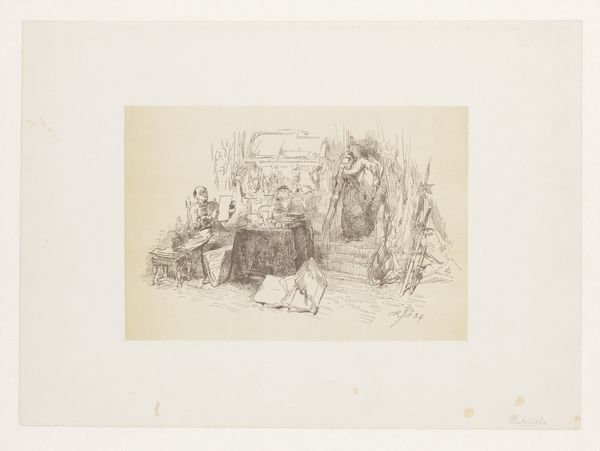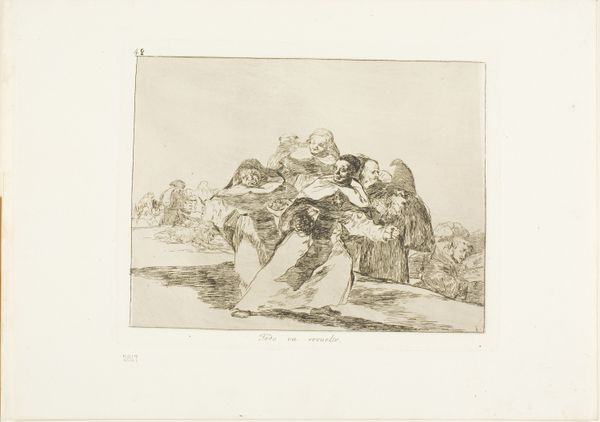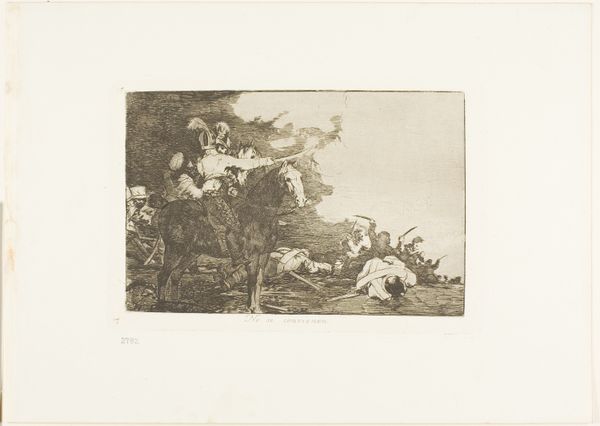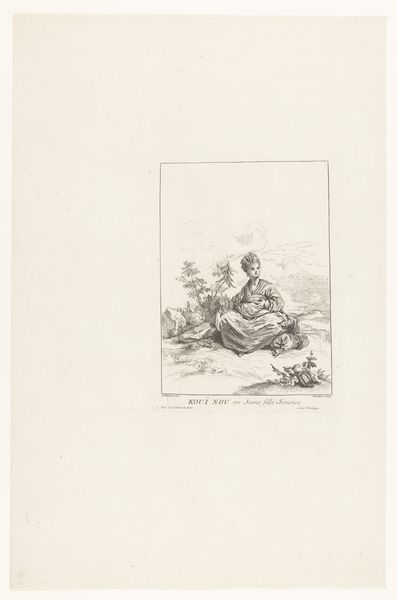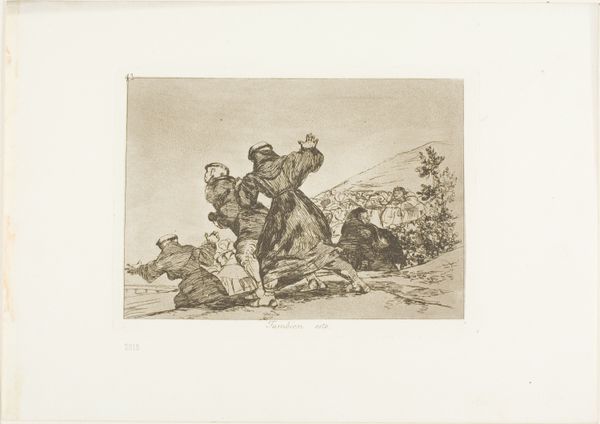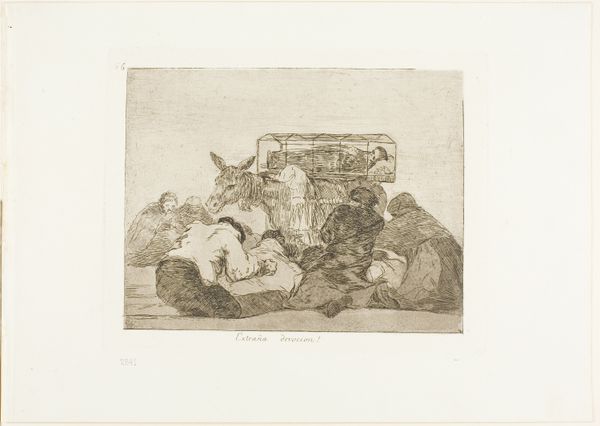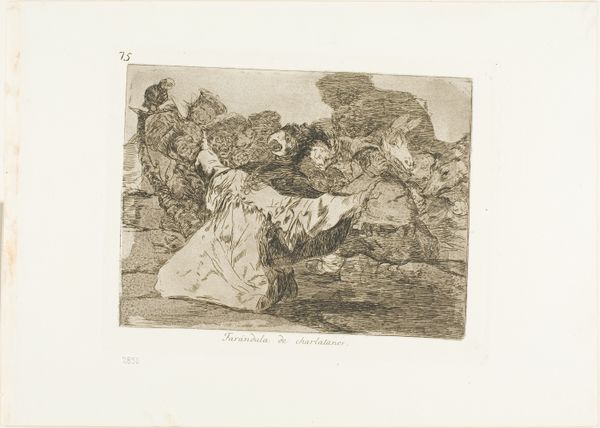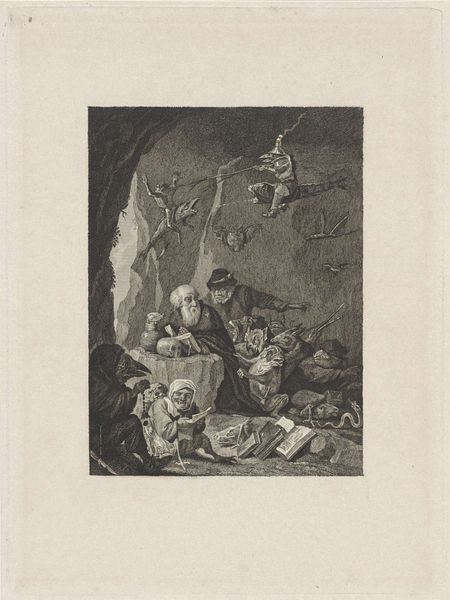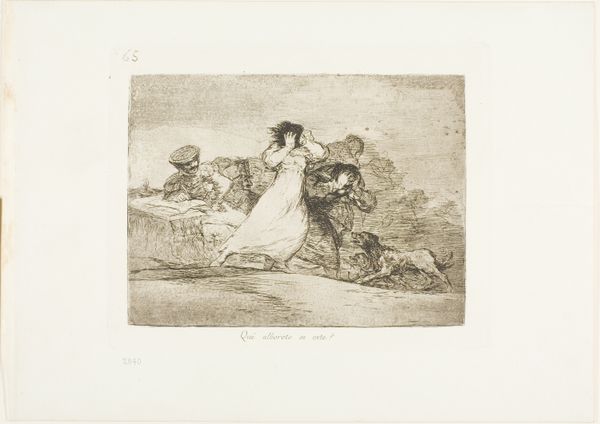
That is the worst of it!, plate 74 from The Disasters of War Possibly 1815 - 1863
0:00
0:00
drawing, print, etching, paper
#
drawing
#
ink drawing
#
narrative-art
# print
#
etching
#
etching
#
paper
#
romanticism
#
history-painting
Dimensions: 153 × 193 mm (image); 175 × 215 mm (plate); 240 × 337 mm (sheet)
Copyright: Public Domain
Curator: Look at this powerful piece! We’re standing before Francisco de Goya’s "That is the worst of it!", plate 74 from *The Disasters of War*. Goya probably created it between 1815 and 1863, and it’s an etching printed on paper. Editor: Well, "worst" certainly seems to be an understatement. It's like gazing into a nightmare, all stark contrasts and desperate figures. There’s a swirling, chaotic energy that practically leaps off the page. Curator: Absolutely. Goya's "Disasters of War" is a series of prints responding to the Peninsular War. It’s his visceral reaction to the conflict between Napoleon's forces and Spain. In this plate, you see figures surrounding what appears to be a horse, reading or presenting a document. Editor: It's unnerving, seeing a horse apparently literate! More unsettling is how the horse’s document takes precedence over the gaunt and anguished humans clinging to each other. There's a real sense of societal inversion at play. A horse, likely representing the ruling classes or the establishment, is dictating the terms while the people suffer. Curator: That's a potent reading! And note Goya's mastery of aquatint here to create areas of tone that enhance the drama, focusing our eyes on the key players. It intensifies the bleakness, almost obscuring details while throwing the figures into stark relief. Editor: And isn't that what oppression often does? It obscures the specifics of individual suffering behind a wall of systemic injustice. Also, Goya included a caption at the bottom of the etching: "Esto es lo peor!", or "That is the worst of it!". A sentiment as sadly pertinent today as it was then. Curator: It’s almost like a self-aware lament on the limitations of depicting true horror. Art, for Goya, might be a way to bear witness, but perhaps can never fully convey the depths of human suffering. It is truly humbling and frightening to grapple with the depth and nuance of this plate. Editor: Frightening, yes. But it is also an important reminder that witnessing isn't passive. Goya compels us to confront uncomfortable truths, and it is this confrontation that fuels resistance. Thanks for your time.
Comments
No comments
Be the first to comment and join the conversation on the ultimate creative platform.
